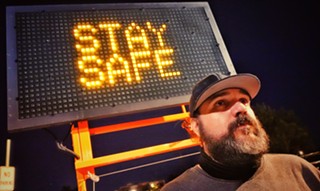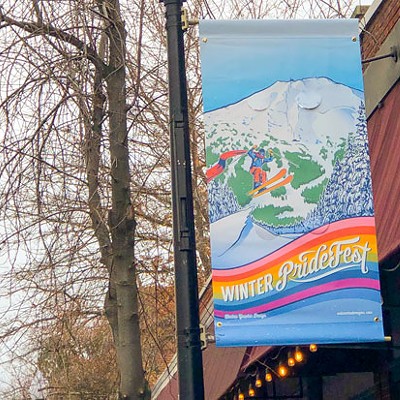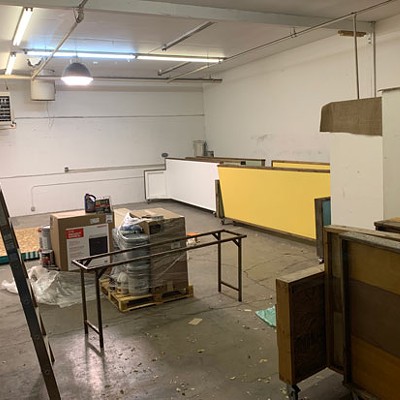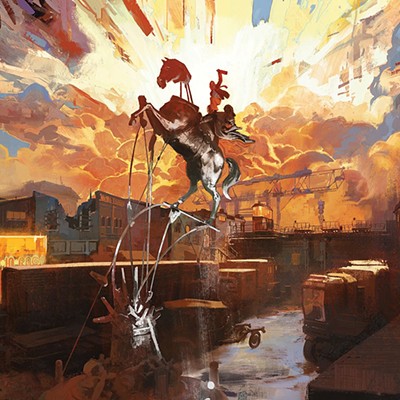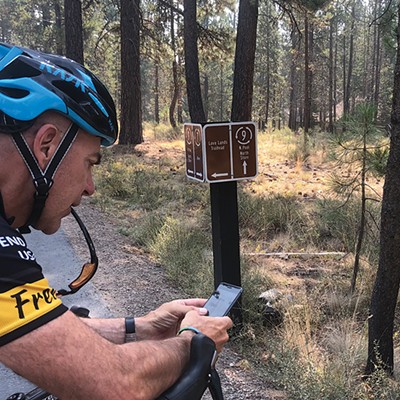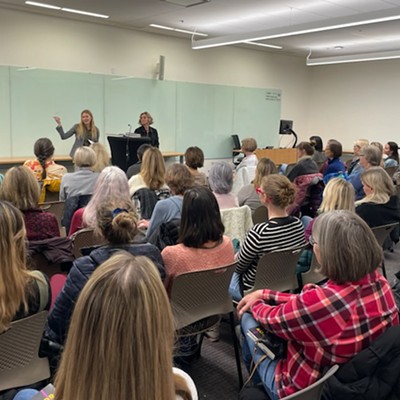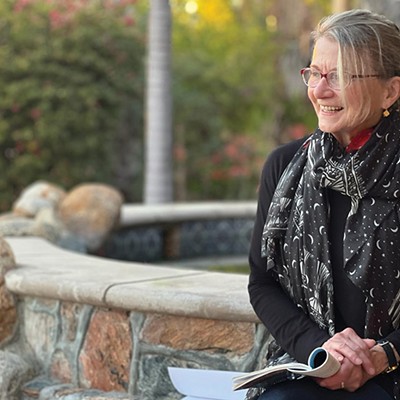Louie Van Patten's pop culture work captures the very thoughts found in his subject's eyes and his self-portraits, nudes and figures have a way of relying on the baggage the viewer brings to the pieces. Van Patten initially worked with artist Cara Thayer for years until eventually striking out on his own, creating work equally personal and haunting. After toiling in Bend as an artist for over a decade, Van Patten will move to Portland sometime in May. Here's an excerpt from an interview the Source recently had with the incredibly talented artist.
Source Weekly: What started it all? What was your initial spark to make art?
Louie Van Patten: I've never really identified with this idea where...people sometimes say, "Well, I've always been an artist," which is true, but I didn't identify as that when I was a kid. It wasn't until I met Cara that I thought it was even an option to do it for real.
SW: But you didn't feel like an artist?
LVP: I didn't like that narrative. It feels like a cheap narrative. I was probably too much of a scaredy-puss to believe I could do it until I already was doing it and then...it was like, "The training wheels are off, can you ride this bike by yourself?" And I realized, wow, I don't really want to do anything else. It's a choice, in a way.
SW: Now you have your own body of work.
LVP: I've been working on my "body of work" for only a few years and I had to kind of catch myself. I work pretty hard, but...I'm not there yet. I'm willing to throw stones from a glass house, but I'm aware I might get a little chipped and cracked doing that.
SW: Are you always surprised about the pieces that take off compared to the pieces that don't get the attention you'd think?
LVP: I try not to think too much about what's going to get attention. It's hard not to get locked into this social media feedback cycle. At a certain point it becomes a little perverse. Exposure is a weird thing now. Most of the paintings I sell aren't in the United States. The last three paintings I sold were Australia, England and some other European country, but it doesn't mean I'm an internationally collected artist, it just means that I'm selling paintings for cheap enough that people in those markets that value art want to buy them. It doesn't equate to real, substantial success. It's very Warhol-ian and that's how it feels.
SW: What do you hope people take away from your art?
LVP: I get comments about the emotional quality or the intensity and, well, I'm an intense, emotional crybaby person, but I don't force that into the art. When you make art you want it to be not so immediately apparent what you're meant to think or what you're even looking at. If anything, you want to defy yourself and I don't do that enough, really. I believe in paint. I'm interested in paint for its own sake in a way that's not necessarily normal or natural. I'm into it. I like it.
SW: So people's perception...
LVP: As far as people are concerned, I have a studio, I make paintings and I sell the paintings and it's just great, right? But the reality is I have a tiny bed and a tiny bedroom and I paint in the tiny bedroom where I live and work, so the emotional consequences of the work, I have to deal with. I don't get to leave. That is unhealthy because I'm in an emotional state from the outcome [of the work] every time. Otherwise, you're just going to bed, wanting to burn your room down. I can't hide from what I do.
To view more of Louie Van Patten's work visit his website at www.louievanpatten.com

